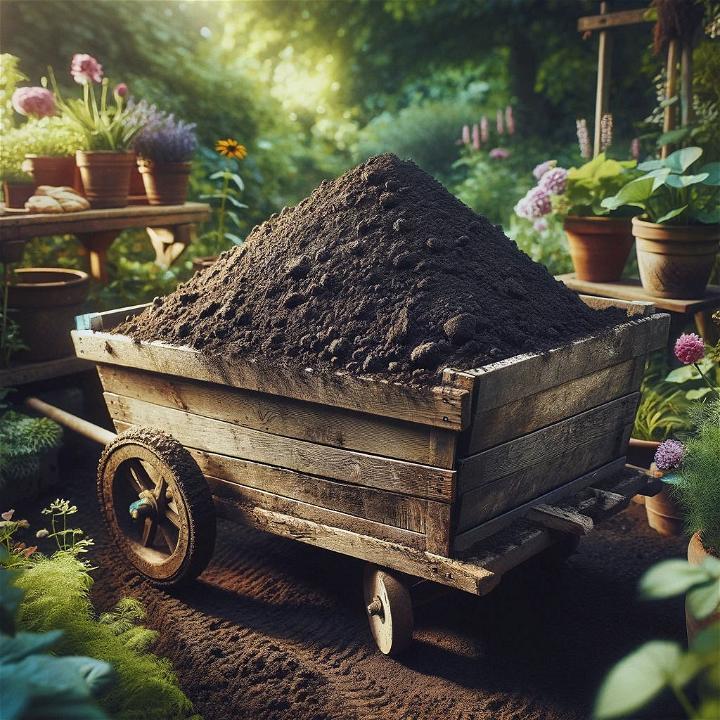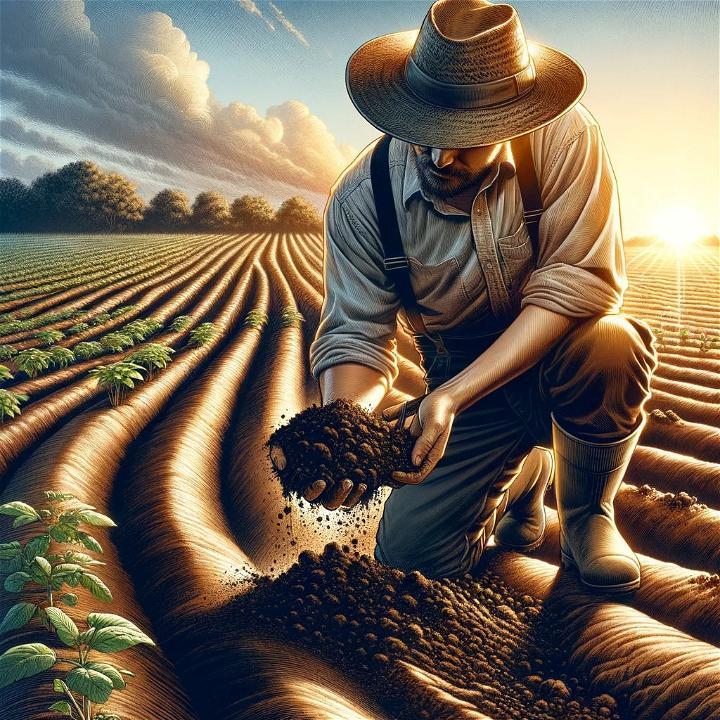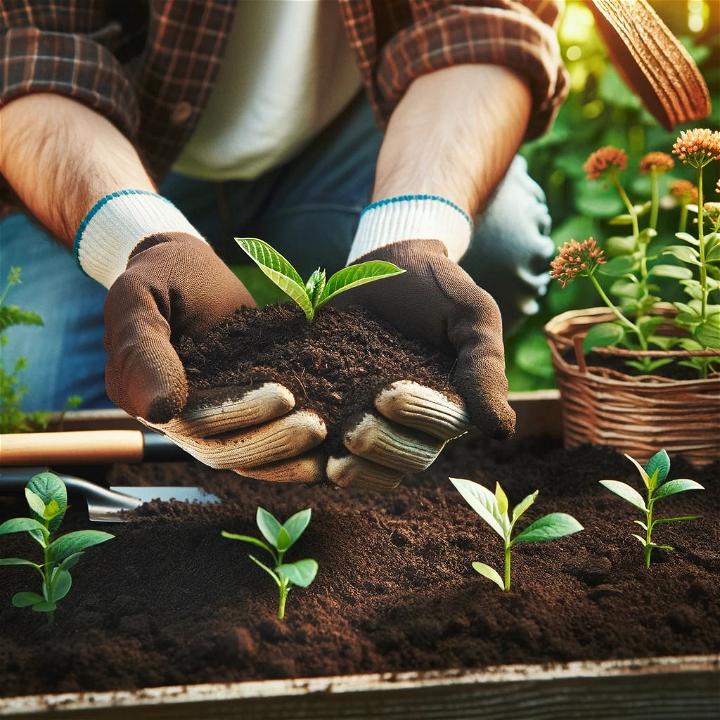Topsoil, the uppermost layer of soil, plays a paramount role in gardening and ecosystem sustainability. Typically ranging from 2 to 8 inches deep, topsoil is teeming with organic matter and microorganisms vital for plant growth. This rich layer is where the majority of biological soil activity takes place, fostering nutrient absorption crucial for thriving flora.
In gardening, topsoil serves as a fertile foundation, providing plants with essential nutrients and a conducive environment for root development. Comprising a blend of minerals, air, water, and organic materials, topsoil supports the growth of a diverse range of plants, contributing to lush landscapes and bountiful harvests.
Understanding the composition of topsoil is key to harnessing its full potential for gardening success. With its high concentration of organic matter and microorganisms, topsoil acts as a nutrient powerhouse, promoting healthy plant growth and robust ecosystems. By delving into the nuances of topsoil and its significance, you can elevate your gardening practices and cultivate thriving green spaces.

Understanding Topsoil
Topsoil is the uppermost layer of soil found on the Earth’s surface, typically ranging from 2 to 8 inches deep. It is a crucial component in gardening and agriculture due to its rich composition of organic matter, microorganisms, minerals, and nutrients essential for plant growth.
Definition of Topsoil
Topsoil is defined as the uppermost layer of soil, rich in organic matter and nutrients necessary for plant development. It is where most of the Earth’s biological soil activity occurs, making it vital for sustaining plant life.
Composition of Topsoil
The composition of topsoil includes a blend of organic matter, microorganisms, minerals, and nutrients that provide a fertile environment for plants. This rich mixture supports root growth, water retention, and the exchange of essential nutrients for plant nourishment.
Importance of Topsoil in Gardening
Topsoil plays a crucial role in gardening by creating a conducive environment for plant roots to thrive. It aids in retaining moisture, promoting beneficial microbial activity, and supporting healthy plant growth. Without quality topsoil, plants may struggle to establish strong root systems and uptake the necessary nutrients for their development.
For more detailed information on the quality guidelines of topsoil for landscaping, you can refer to this Topsoil Quality Guidelines for Landscaping resource.
Types of Topsoil
Understanding the types of topsoil can help you select the right one for your garden’s needs, ensuring your plants grow healthy and strong. Each type of topsoil has unique characteristics that make it suitable for different gardening purposes. Here, we’ll explore the common types of topsoil, answering some frequently asked questions along the way.

Clay
Clay soil is dense and can retain water for a long time. It’s rich in nutrients but has poor drainage and can be hard to work with, especially when wet. You can improve clay soil by adding organic matter such as compost or sand to enhance its drainage and make it easier to work with.
Silt
Silt soil has a smooth, flour-like texture and retains moisture well. It’s fertile and easier to work with than clay but can compact easily. Silt soil is generally good for most plants, but because it can compact easily, it may require regular aeration to prevent waterlogging.
Sand
Sandy soil is gritty, drains quickly, and warms up fast in the spring. It doesn’t hold nutrients well, making it challenging for some plants to thrive. Adding organic matter like compost or well-rotted manure can help sandy soil retain more moisture and nutrients.
Loam
Loam is the ideal garden soil. It’s a balanced mix of sand, silt, and clay, providing great drainage, nutrient retention, and aeration. It’s fertile and easy to work with. Loam holds its shape when squeezed but crumbles easily. It feels smooth and gritty. Performing a simple soil test can confirm its composition.
Chalk
Chalky soil contains a large amount of limestone, making it highly alkaline. It’s free-draining but can be nutrient-poor and may harm acid-loving plants. Yes, but you may need to add organic matter and nutrients regularly. Choose plants that tolerate alkaline conditions for best results.
Peat
Peat soil is rich in organic matter, retains moisture well, yet is well-draining. It’s acidic, making it perfect for growing acid-loving plants. Peat takes centuries to form, making it a non-renewable resource. Consider sustainable alternatives like coconut coir for similar benefits.
Choosing the right type of topsoil is essential for the health of your garden. By understanding the characteristics of each type and how they meet the needs of your plants, you can create a thriving, productive garden space.
Topsoil in Garden and Landscaping
Topsoil plays a crucial role in enhancing the vitality of garden beds, aiding lawn establishment, and elevating landscaping projects. By integrating topsoil into these areas, it directly impacts the soil structure, fostering a conducive environment for healthy plant growth. Garden beds benefit from the nutrient-rich composition of topsoil, providing plants with essential elements for robust development. This fertile layer promotes root growth and moisture retention, ensuring plants thrive in their designated spaces. In landscaping, the use of topsoil acts as a foundation for creating visually appealing designs, supporting the longevity of plant life and enhancing the overall aesthetics of the outdoor space.

Topsoil in Agriculture
In agriculture, topsoil serves as a valuable resource for farmers seeking to optimize soil fertility, boost crop yields, and maintain sustainable practices. The application of topsoil enriches the soil with essential nutrients, creating an optimal environment for crop cultivation. By enhancing soil fertility, farmers can cultivate a variety of crops with improved yields, contributing to the sustainability of agricultural operations. Additionally, the use of topsoil aids in combating soil erosion and promoting long-term soil health, ensuring the continued productivity of farmlands for future generations.
Benefits of Topsoil
Healthy topsoil plays a crucial role in enhancing plant growth and preserving soil health. Let’s explore how topsoil provides numerous benefits in gardening and agriculture.
Enhancing Plant Growth
Topsoil serves as a rich source of nutrients vital for plant growth. By improving nutrient availability, topsoil ensures that plants have access to essential elements like nitrogen, phosphorus, and potassium. This leads to healthier and more robust plants with increased resistance to diseases and pests.
Moreover, topsoil aids in water retention, allowing plants to access moisture during dry periods. The ability of topsoil to retain water ensures that plants remain hydrated, promoting consistent growth and development. Additionally, topsoil provides an ideal environment for root development, enabling plants to establish strong root systems that anchor them securely in the ground.
Preserving Soil Health
One of the significant benefits of topsoil is its role in preserving soil health. Topsoil helps prevent soil erosion by providing a protective layer that reduces the impact of water and wind on the underlying soil. This protective barrier ensures that the soil structure remains intact, preventing valuable nutrients from being washed away.
Furthermore, topsoil promotes soil aeration, allowing roots to access oxygen essential for their growth. Adequate soil aeration facilitates gas exchange within the soil, promoting microbial activity and nutrient cycling. Additionally, topsoil helps maintain a balanced soil pH, creating an optimal environment for soil microorganisms to thrive and support plant growth over the long term.
By enhancing plant growth and preserving soil health, topsoil plays a crucial role in ensuring the productivity and sustainability of agricultural and gardening practices. Investing in quality topsoil can have long-lasting benefits for your plants and the health of the soil ecosystem.
Choosing Topsoil for Your Garden
When it comes to choosing the right topsoil for your garden, several key factors need consideration to ensure your plants thrive. Factors such as texture, nutrient content, pH levels, and the presence of organic matter play a crucial role in the success of your garden.
Factors to Consider:
- Texture: The texture of topsoil determines how well it retains water and nutrients. Sandy topsoil drains quickly but may require more frequent watering, while clay-rich topsoil retains moisture but can be dense for plant roots. Loamy topsoil, a balance between sand and clay, is often considered ideal for most plants.
- Nutrient Content: Topsoil rich in essential nutrients such as nitrogen, phosphorus, and potassium is vital for plant growth. Look for topsoil that is nutrient-rich or supplement with organic fertilizers to provide plants with the necessary nutrients.
- pH Levels: The pH level of topsoil indicates its acidity or alkalinity. Most plants prefer slightly acidic to neutral soil. Testing the pH of the topsoil ensures that it matches the requirements of your plants for optimal growth.
- Presence of Organic Matter: High-quality topsoil contains organic matter such as compost, decayed plant material, and beneficial microorganisms. Organic matter improves soil structure, nutrient retention, and promotes a healthy soil ecosystem for your plants.
Testing Topsoil Quality:
Ensuring topsoil quality is essential before using it in your garden. Conducting simple tests can help you determine if the topsoil is suitable for your plants.
- Visual Inspection: Check the topsoil’s color, texture, and presence of any debris. Good-quality topsoil should be dark and crumbly, indicating a healthy soil structure.
- Soil pH Testing: Use a soil pH testing kit to measure the acidity or alkalinity of the topsoil. Adjust the pH level as needed to create an optimal growing environment for your plants.
- Nutrient Analysis: Consider sending a sample of the topsoil for nutrient analysis to a professional laboratory. This analysis will provide detailed information on the nutrient content of the soil, guiding you on additional fertilization needs.
By considering these factors and conducting thorough tests, you can select topsoil that meets the requirements of your garden, providing a fertile foundation for your plants to flourish.
FAQs about Topsoil
Topsoil plays a vital role in gardening and landscaping, yet it’s a component that many people have questions about. Below, you’ll find answers to some of the most commonly asked questions. This section is designed to help you understand topsoil better, so you can make the most out of its benefits for your garden.
What is topsoil?
Topsoil is the uppermost layer of the Earth’s crust, and it’s where most of the planet’s biological soil activity occurs. It’s rich in organic matter and nutrients, making it ideal for growing plants.
What are the main uses of topsoil in gardening?
- Improving Soil Quality: Mixing topsoil with your garden’s existing soil can enhance its fertility and structure.
- Lawn Preparation and Repair: Topsoil is used to prepare the ground for new lawns or repair bald spots in existing ones.
- Growing Vegetables and Flowers: A layer of topsoil can provide the necessary nutrients and support for growing healthy vegetables and flowers.
- Landscaping Projects: Topsoil is used to create beds, borders, and elevate the garden landscape.
What are the benefits of using topsoil in my garden?
- Nutrient-Rich Growing Medium: Provides essential nutrients for plants.
- Improved Water Retention: Helps the soil hold moisture, reducing the need for frequent watering.
- Better Drainage: Prevents water from pooling, which can hinder plant growth.
- Weed Suppression: A thick layer of topsoil can help suppress weeds.
- Supports Microbial Life: Encourages a healthy ecosystem in your garden soil.
How do I choose the right topsoil?
When selecting topsoil, consider the following:
- Texture: Loamy topsoil, which is a mix of sand, silt, and clay, is generally the best for most gardening needs.
- Organic Content: Look for topsoil with a high organic matter content for better nutrient supply.
- pH Level: Topsoil with a neutral pH (around 6-7) is suitable for most plants, but check the specific needs of your plants beforehand.
- Weed and Pest Free: Ensure the topsoil is screened and free from weeds and pests.
How much topsoil do I need?
To calculate the amount of topsoil you need for your garden:
- Measure the length and width of the area in meters.
- Decide how deep you want the topsoil layer to be (a depth of 5-10 cm is common for gardens).
- Use an online topsoil calculator or apply the formula: Length (m) x Width (m) x Depth (m) = Volume in cubic meters (m³).
Always order a little more than you calculate to account for settling and compaction.
Can I mix topsoil with compost?
Yes, mixing topsoil with compost is an excellent way to enhance its nutrient content and improve soil structure. A common recommendation is a 50/50 mix, but you can adjust this according to your garden’s specific needs.
Understanding the importance of topsoil and how to effectively use it can greatly benefit your gardening projects. By selecting the right topsoil and applying it correctly, you can create a more vibrant, healthy, and productive garden.
Conclusion
Understanding the importance of topsoil in gardening and landscaping is crucial for nurturing healthy plants and promoting sustainable growth. By recognizing topsoil as the uppermost layer of the soil rich in organic matter and beneficial microorganisms, we grasp its significance in supporting plant life and ecosystem balance.
The Essence of Topsoil
Topsoil serves as a vibrant hub for soil activity, hosting a myriad of microorganisms essential for nutrient recycling and plant health. Its composition, brimming with organic matter, fosters optimal conditions for root development and water retention, laying the foundation for lush gardens and thriving landscapes.
Nurturing Plant Growth
When integrated into garden beds or landscaping projects, topsoil acts as a nourishing blanket that feeds plant roots, providing vital nutrients and structural support for robust growth. Its ability to sustain moisture levels and promote aeration encourages strong root systems, enabling plants to flourish and bloom vibrantly.
Sustainable Landscaping Practices
Incorporating topsoil into gardening practices not only enhances plant vitality but also promotes sustainable land management. By prioritizing the preservation of topsoil through proper soil conservation techniques and organic amendments, we contribute to the longevity of our gardens and the resilience of our ecosystems.
Embracing the Benefits
Embrace the transformative power of topsoil in cultivating vibrant green spaces and nurturing biodiversity. By honoring the role of topsoil as a vital component of healthy soil ecosystems, we embark on a journey towards sustainable gardening practices and thriving landscapes.
For more detailed information about topsoil and its significance in gardening, dive deeper into its properties on Wikipedia.
Explore More About Soil: Related Articles
Discover more about soil with related articles covering various topics such as soil health, types of soil, and soil conservation techniques. Explore now!
- Adding Phosphorus to Soil: Learn practical ways to enrich your soil with phosphorus, boosting plant health and growth effectively.
- Buying Loam Soil: Explore where to find quality loam soil for your garden in this detailed guide for beginners.
- Avoiding Soil Mistakes: Uncover common soil management errors and how to avoid them for a thriving garden.
- Types of Soil Guide: Discover the various soil types and their characteristics in this comprehensive guide.
- Soil Amendments for Gardens: Enhance your garden naturally with this guide on effective soil amendments.
- Raising Soil pH: Simple methods to increase soil pH for healthier plant growth and vitality.
- Lowering Soil pH: Discover easy ways to reduce soil pH for optimal plant health and development.
- Home Soil pH Testing: Learn how to test your soil’s pH at home with this easy guide.
- Understanding Loam Soil: Get the ultimate guide on what loam soil is and its benefits for gardening.
- Importance of Soil: Explore the crucial role of soil in our ecosystem and why it matters.
- What Is Soil?: Delve into the composition, types, and functions of soil in this educational piece.
